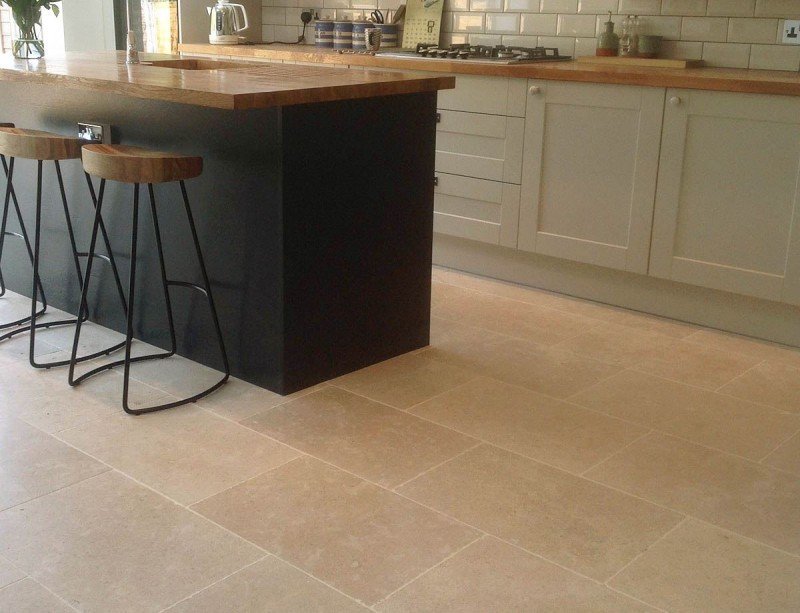Limestone tiles are a favored choice in architectural and decorative applications for their warm, natural aesthetic and versatility. Formed from sedimentary rock composed primarily of calcium carbonate, limestone tiles bring a touch of earthy richness to interiors and exteriors alike. Whether you’re considering limestone for your next renovation project or simply exploring options, this guide provides essential information on the advantages, installation, and maintenance of limestone tiles.
Characteristics of Limestone Tiles
Limestone tiles are known for their distinctive natural patterns and color variations, which range from beige and gray to a subtle blue or green hue. These tiles often feature small fossils and shell fragments, adding to their unique appeal. The texture can vary from smooth and polished to a more rugged, brushed finish, offering flexibility in design aesthetics.
Advantages of Limestone Tiles
- Aesthetic Appeal: Limestone tiles offer a timeless elegance that can seamlessly integrate with any décor style, from classic to contemporary. Their natural beauty enhances the ambiance of any space.
- Durability: Although not as hard as granite, limestone tiles provide considerable durability and can last for decades if properly maintained, especially in low-to-moderate traffic areas.
- Versatility: Suitable for various applications, limestone tiles can be used for flooring, wall cladding, bathrooms, and even as decorative accents in outdoor areas.
- Natural Insulation: Limestone possesses natural insulation properties, keeping areas cooler in the summer and retaining warmth in the winter.
- Eco-Friendly: As a natural stone, limestone is more environmentally friendly compared to synthetic materials. It also contributes to indoor air quality, as it doesn’t emit volatile organic compounds (VOCs).
Installation Tips for Limestone Tiles
Installing limestone tiles requires careful planning and execution to ensure the best appearance and longevity:
- Proper Subfloor Preparation: Ensure that the subfloor is level, clean, and strong enough to support the weight of limestone, which is heavier than synthetic tiles.
- Sealing: Limestone is porous, so it must be sealed before and after grouting to protect it against moisture and stains. Choose a high-quality sealant suitable for limestone.
- Professional Installation: Due to the specific needs related to cutting and laying natural stone, professional installation is recommended. This ensures that the tiles are properly aligned, spaced, and secured.
Maintenance of Limestone Tiles
To maintain the beauty and integrity of limestone tiles, regular and proper care is essential:
- Regular Cleaning: Clean limestone tiles with a mop or cloth dampened with warm water. Use a pH-neutral cleaner specifically designed for natural stone. Avoid acidic or abrasive cleaners, which can etch or scratch the surface.
- Immediate Spill Response: Blot up spills immediately, particularly those that are acidic (like coffee, wine, or tomato sauce), to prevent potential staining.
- Frequent Resealing: Depending on foot traffic and placement, limestone tiles should be resealed every one to two years to maintain their protective layer.
- Avoid Harsh Scrubbing: Use soft cloths or mops for cleaning. Avoid using abrasive brushes or pads that can scratch the limestone surface.
Considerations Before Purchasing Limestone Tiles
Before committing to limestone tiles, consider the following:
- Cost: Limestone tiles can be more expensive than ceramic or porcelain options, especially when factoring in installation and maintenance costs.
- Suitability: Think about the area of use. High traffic areas or those prone to spills (like kitchens) may require more frequent maintenance.
- Climate Compatibility: In very cold climates, consider the implications of frost and thaw cycles on limestone when used outdoors.
Conclusion
Limestone tiles add a luxurious and natural element to any space but require careful selection and maintenance to preserve their beauty over time. By understanding the specific characteristics and care requirements of limestone, homeowners can make informed decisions that align with both their aesthetic preferences and practical needs. Whether enhancing a bathroom, kitchen, or patio, limestone tiles offer a robust and attractive choice that, with proper care, can last for generations.
4
